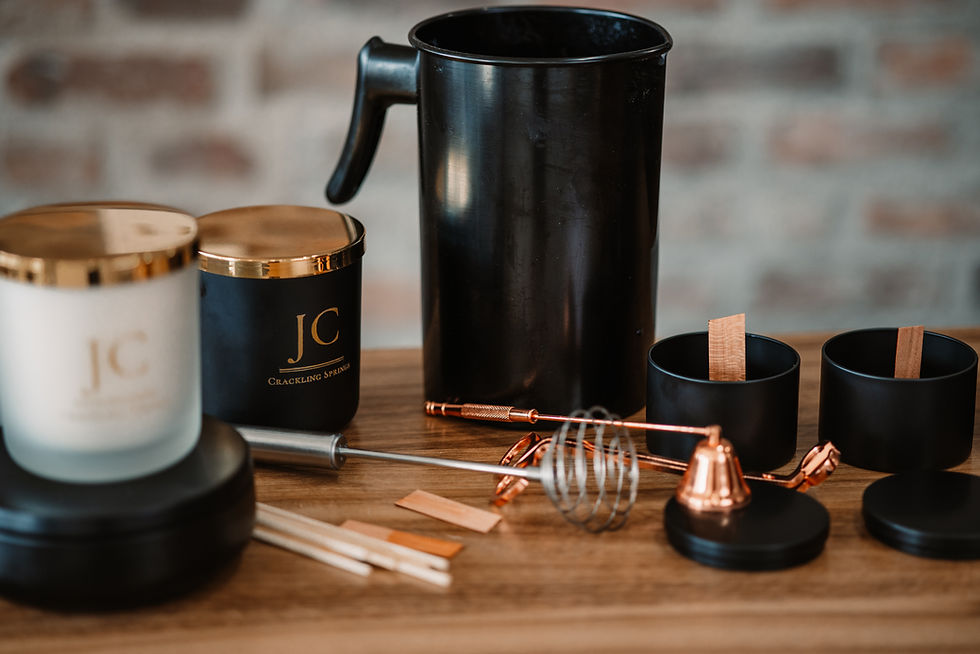Navigating the Hazards: Understanding and Avoiding Toxic Fragrances in Candle Making
- jtorgers1984
- Dec 7, 2023
- 2 min read
In the enchanting world of candle making, the allure of delightful fragrances can be irresistible. However, there's a hidden danger lurking beneath the pleasant scents – the potential toxicity of certain fragrance oils. In this guide, we'll explore the risks associated with toxic fragrances and offer insights on how to make informed choices to create candles that are both beautiful and safe.
The Dark Side of Fragrance: Not all that smells sweet is benign. Many commercially available fragrance oils contain synthetic compounds that can release harmful chemicals into the air when burned. Understanding the potential risks is the first step in creating candles that contribute to a healthy living environment.
Identifying Toxic Ingredients: Dive into the world of fragrance oil labels to decipher the ingredients. Look out for harmful components such as phthalates, benzene derivatives, and other volatile organic compounds (VOCs). Opting for natural and organic fragrance options can significantly reduce the risk of exposure to harmful substances.
Choosing Safer Alternatives: Explore fragrance options that prioritize natural sources and avoid synthetic additives. Essential oils derived from plants can provide delightful scents without the associated health risks. Consider lavender, eucalyptus, or citrus oils to infuse your candles with nature's goodness.
Reading the Fine Print: Thoroughly research and vet your fragrance oil suppliers. Reputable manufacturers often provide detailed information about the composition of their products. When in doubt, don't hesitate to reach out to them with specific questions about the safety of their fragrance oils.
DIY Fragrance Blends: Take control of your candle's scent profile by creating your fragrance blends. This way, you can ensure that only safe and natural components are used. Experiment with various essential oils to find unique combinations that not only smell amazing but also adhere to health and safety standards.
Educating Your Audience: If you sell or gift your candles, consider including information about the fragrance oils used. Transparency builds trust, and your customers or recipients will appreciate knowing that you prioritize their well-being.
Ventilation Matters: Proper ventilation is crucial when burning candles, especially those with fragrance oils. Ensure that your living space has adequate airflow to disperse any potential airborne toxins. Avoid burning candles in confined spaces without proper ventilation.

As you embark on your candle-making journey, it's essential to be mindful of the potential hazards associated with toxic fragrances. By choosing natural, organic, and transparently labeled fragrance oils, you can create candles that not only illuminate your space but also contribute to a healthier and more enjoyable environment. Let the glow of your candles be a reflection of your commitment to both craftsmanship and well-being.




Comments